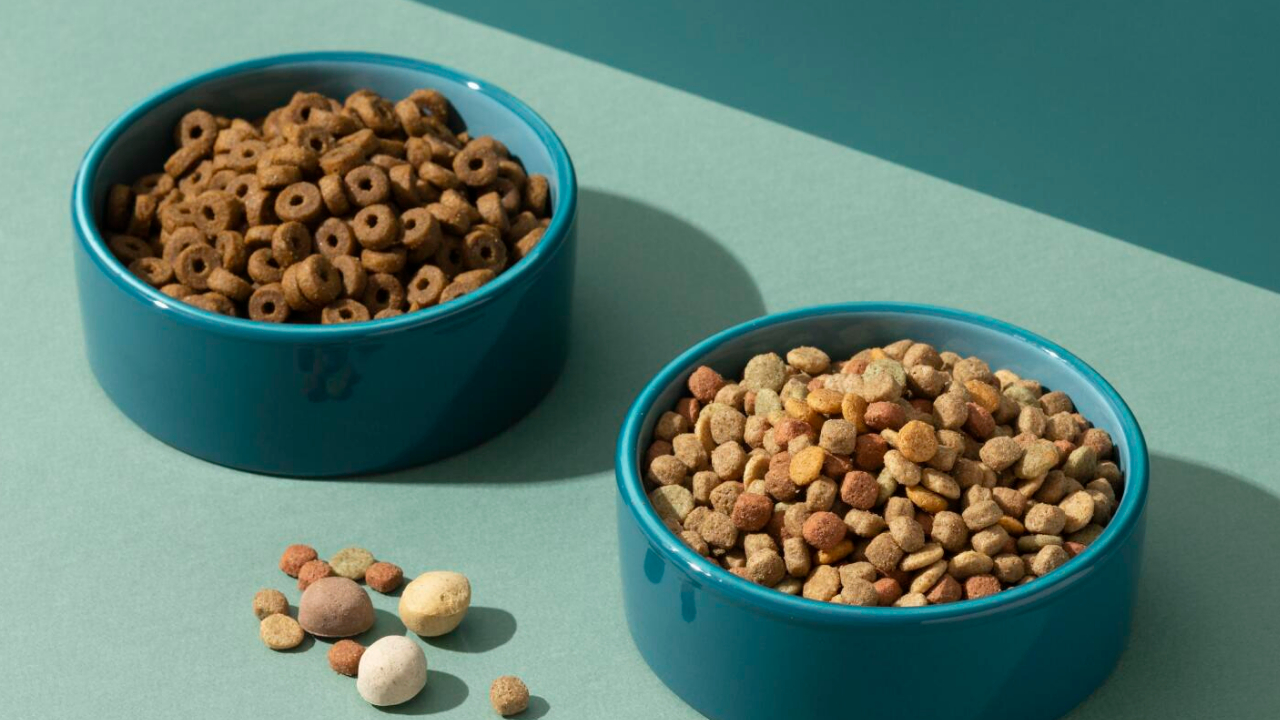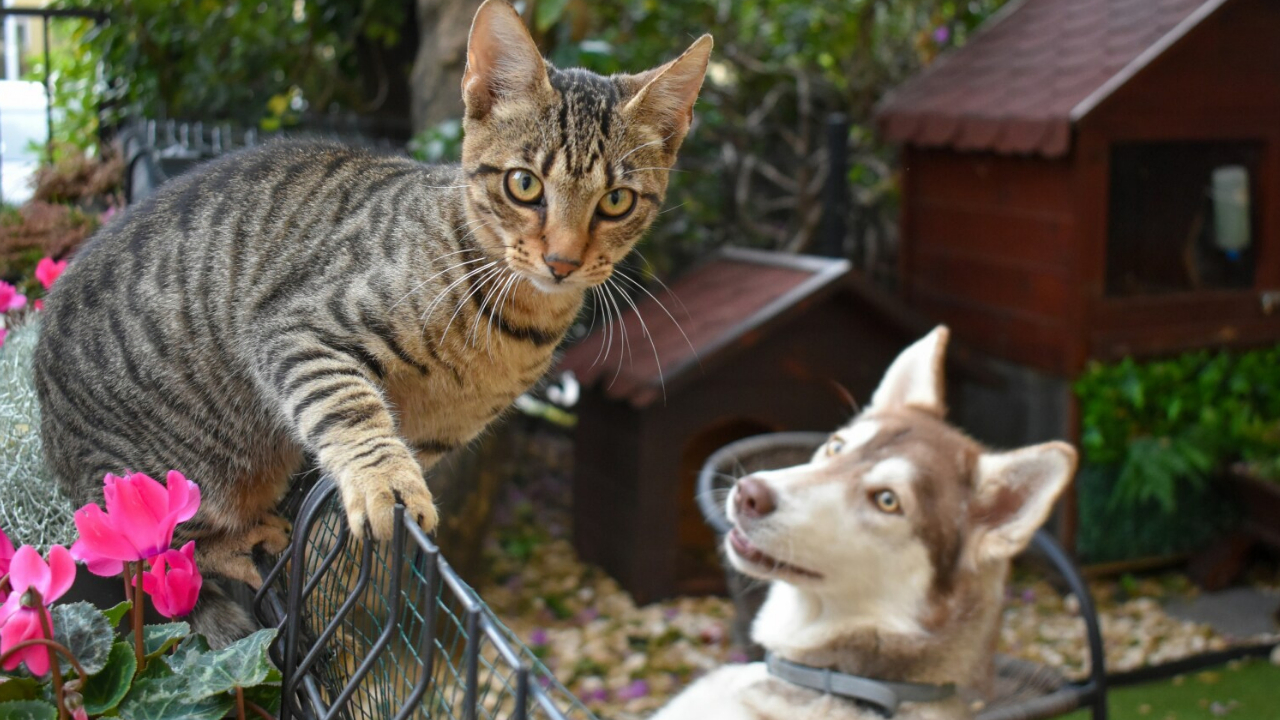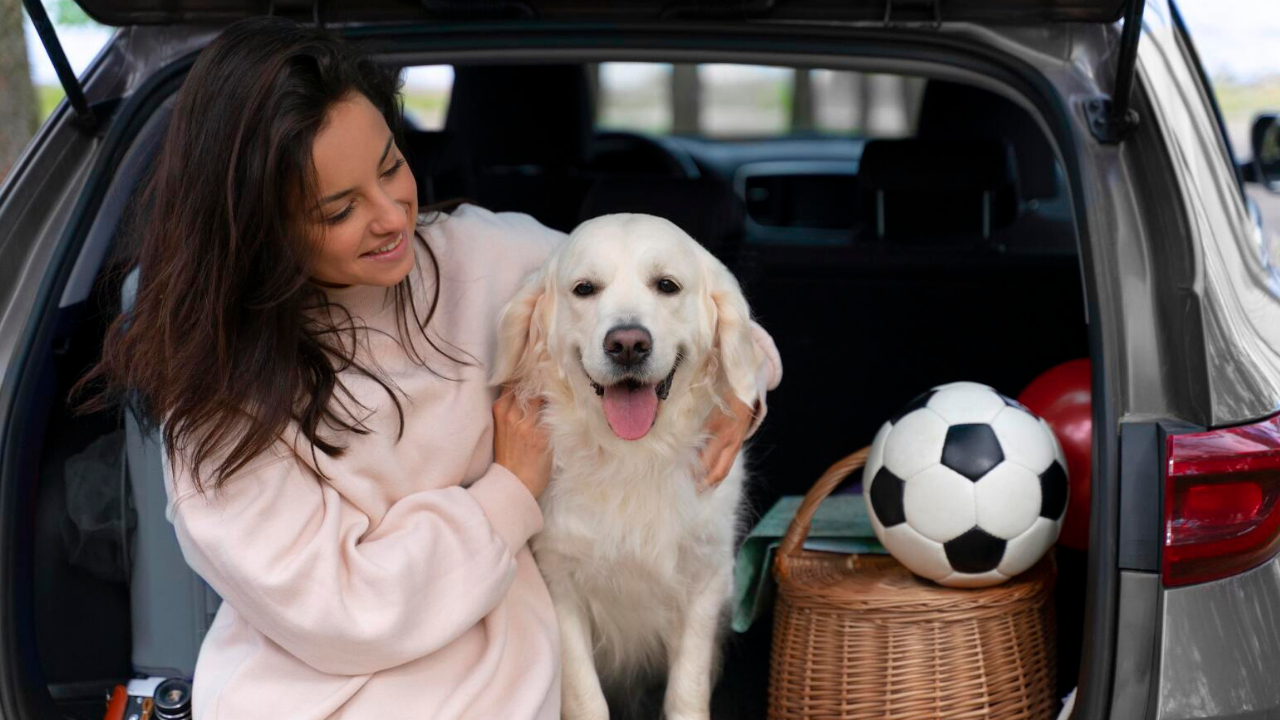Everything Pets
Creating a Balanced Diet for Your Pet

As a pet lover and owner of dogs for over 20 years, I often emphasize the importance of nutrition in maintaining a pet’s overall health and well-being. A balanced diet not only fuels your pet’s energy but also supports their immune system, promotes healthy skin and coat, and can even extend their lifespan. Here’s how to create a balanced diet for your furry friend that ensures they thrive.
Understanding Your Pet’s Nutritional Needs:
- 1. Know Your Pet’s Specific Requirements: Different species and breeds have varying nutritional needs. For example, a growing puppy has different requirements than a senior dog. Consult your veterinarian to determine the right diet based on your pet’s age, weight, activity level, and health status.
- 2. Essential Nutrients : A balanced diet for pets generally includes the following essential nutrients:
- Proteins – Vital for growth, repair, and maintenance of body tissues. Sources include meat, fish, and eggs
Fats– Provide energy and help absorb certain vitamins. Look for healthy fats like fish oil or flaxseed oil.
Carbohydrates– While not essential, they provide a good source of energy. Opt for whole grains and vegetables
Vitamins and Minerals: Necessary for various bodily functions, these should be part of your pet’s diet. A well-formulated pet food usually contains these, but consult your vet about supplements if needed
Choosing the Right Pet Food
1. Commercial vs. Homemade Diets: High-quality commercial pet foods are formulated to meet your pet’s nutritional needs. Look for brands that meet AAFCO (Association of American Feed Control Officials) standards.
Homemade Diets: If you prefer to prepare food at home, it’s crucial to work with a veterinarian or a pet nutritionist to ensure that your meals are complete and balanced. Some pet owners make the mistake of focusing solely on protein, neglecting other vital nutrients.
2. Read Labels Carefully: When selecting commercial pet food, read the ingredient list and nutritional information:
Avoid foods with excessive fillers like corn and soy, as well as artificial additives and preservatives.
Portion Control and Feeding Guidelines
1. Follow Feeding Guidelines
Refer to the feeding guidelines on your pet food label, but remember these are just starting points.
Adjust portions based on your pet’s activity level and weight. If you’re unsure, consult your vet.
2. Monitor Weight and Body Condition: Regularly assess your pet’s weight and body condition. If your pet is overweight, reducing portion sizes and providing regular exercise can help. Conversely, if your pet is underweight, a vet can help identify
the cause and suggest dietary changes.
Treats and Snacks
Choose Healthy Treats: Treats can be a fun way to bond with your pet but should only make up about 10% of their daily caloric intake. Opt for healthy options like fruits and vegetables (e.g., carrots, blueberries) or low-calorie commercial treats
2. Avoid Human Foods: While it can be tempting to share your food, many human foods are harmful to pets. Foods like chocolate, grapes, onions, and garlic can be toxic. Always check before offering anything outside their regular diet.
Staying Hydrated
- 1. Fresh Water is Essential: Ensure your pet has access to fresh, clean water at all times. Hydration is vital for digestion, circulation, and overall health. Some pets may benefit from wet food, which can also help with hydration.
Special Dietary Needs
Some pets may have specific dietary needs due to health conditions such as allergies, diabetes, or kidney disease. Always consult your veterinarian for tailored dietary recommendations.
2. Consider Supplements: In some cases, dietary supplements can help support your pet’s health. These should always be discussed with your veterinarian to avoid potential imbalances or interactions.
Conclusion
Creating a balanced diet for your pet is an essential part of responsible pet ownership. By understanding their nutritional needs and selecting the right foods, you can ensure your furry friend lives a long, healthy, and vibrant life. Remember, nutrition is not just about feeding; it’s about nurturing. With the right care and attention, you can provide a diet that not only meets their physical needs but also enhances their overall quality of life. Consult your veterinarian regularly, and embark on this journey toward optimal pet health together.
Everything Pets
What to Do If Your Pet Goes Missing: A Comprehensive Guide for Pet Owners

Losing a pet can be one of the most distressing experiences a pet owner can face. Whether your furry friend has escaped the yard or wandered away during a walk, knowing how to act quickly can significantly increase the chances of a safe reunion. Here’s a detailed guide on what to do if your pet goes missing, filled with practical tips and expert advice.
- 1. Stay Calm and Assess the Situation: The first step is to remain calm. Panicking can cloud your judgment. Take a moment to gather your thoughts and assess the situation. Consider the last time you saw your pet and the possible areas they might have gone.
2. Search Your Immediate Area: Look Around Your Home – Begin your search close to home. Check all the usual hiding spots—under beds, in closets, or behind
furniture. Pets often hide when they’re scared.
Expand Your Search – If your initial search is unsuccessful, extend your search to your yard, nearby streets, parks, or other familiar locations. Call out your pet’s name in a calm, soothing voice.
3. Use Familiar Sounds: Bring your pet’s favorite toy, which may make a noise, or shake their food container. Familiar sounds can lure them back or prompt them to respond.
4. Enlist Help: Notify Family and Friends – Ask family members and friends to help you search. More eyes and ears increase the likelihood of finding your pet.
Check with Neighbors – Speak to your neighbors, especially those who may have seen your pet. They might have information or even seen your pet wandering nearby.
5. Create and Distribute Flyers: Make Eye-Catching Flyers
Design flyers that include:
- A clear photo of your pet
- Their name, breed, color, and distinctive features
- Your contact information
Distribute Widely: Post these flyers in your neighborhood, local parks, veterinary clinics, pet stores, and community centers. Digital versions can be shared on social media and local community groups.
6. Utilize Social Media: Post on Local Groups – Share your pet’s information on local social media groups or platforms like Facebook, Nextdoor, or Instagram. Many communities have dedicated lost and found pet pages.
Engage with Local Animal Shelters– Reach out to animal shelters and rescue organizations in your area. Provide them with a flyer and keep in touch regularly.
7. Contact Local Authorities and Shelters: Notify Animal Control – Inform your local animal control or the police department that your pet is missing. They may have
received reports of found pets that match your description.
Check Shelters Regularly – Visit nearby animal shelters frequently, as pets are often brought in shortly after going missing. Provide them with your flyer for reference.
8. Utilize Technology: Microchip Your Pet – If your pet is microchipped, ensure your contact information is up to date. Microchips significantly increase the chances of your pet being returned if found.
Use Pet Tracking Apps – Consider using pet tracking devices or apps. These can help you locate your pet if they wander off, providing real-time GPS tracking.
9. Remain Persistent: Finding a missing pet can take time. Keep searching and remain hopeful. Regularly check in with shelters, continue to share updates on social media, and keep distributing flyers.
10. Prepare for Future Incidents: Preventive Measures- To reduce the likelihood of your pet going missing in the future:
- Ensure your yard is secure and free from escape routes.
- Always use a leash during walks and keep your pet supervised.
- Consider investing in a GPS collar or tracking device.
Establish a Routine – A routine can help your pet feel secure and less likely to wander. Regularly walk your pet in familiar areas and provide them with engaging activities at home.
Conclusion
Losing a pet is a distressing experience, but taking swift and organized action can lead to a successful reunion. By following these steps, you increase your chances of finding your beloved companion. Remember, preparation and preventive measures are key to ensuring your pet stays safe at home. Stay vigilant, and don’t lose hope—many pets find their way back home every day.
Everything Pets
The Ultimate Pet Travel Pack: Must-Have Items for Stress-Free Adventures

Traveling with your pet can be a rewarding experience, but it requires careful planning and preparation to ensure both you and your furry friend have a smooth journey. Whether you’re heading to the vet, taking a road trip, or flying to a new destination, having a well-stocked pet travel pack can make all the difference. Here’s a guide to creating the ultimate pet travel pack with essential items that will keep
your pet is comfortable, safe, and happy throughout the trip.
- 1. Identification and Documentation: Why It’s Essential- In case you get separated from your pet, having proper identification is crucial for a swift reunion.
- Must-Have Items:
- ID Tags – Ensure your pet’s collar has an updated ID tag with your contact information
- Microchip Information – If your pet is microchipped, carry the microchip number and registration details.
- Medical Records – Bring a copy of your pet’s vaccination records, medical history, and any required travel certificates
- 2. Travel Carrier or Crate: Why It’s Essential – A travel carrier or crate provides safety and comfort for your pet during transportation.
- Must-Have Items:
- Comfortable Carrier – Choose a well-ventilated carrier that’s the right size for your pet. It should be sturdy, secure, and comfortable.
- Bedding – Line the carrier with soft bedding or a favorite blanket to make it cozy
Familiar Items – Include a toy or item with your pet’s scent to provide comfort and reduce anxiety.
3. Food and Water Supplies: Why It’s Essential- Keeping your pet well-fed and hydrated is crucial for their health and comfort.
Must-Have Items:
Travel-Size Food Containers– Pack enough of your pet’s regular food in a leak-proof container or resealable bag.
Portable Water Bowl – Bring a collapsible or travel bowl for easy hydration on the go
Water– Carry a supply of bottled water to prevent your pet from drinking unfamiliar water that might upset their stomach.
4. Health and Hygiene Essentials: Why It’s Essential- Maintaining your pet’s health and hygiene is important, especially when traveling
Must-Have Items:
Medications – Pack any medications your pet needs, including flea and tick preventatives
First Aid Kit – Include basic supplies like bandages, antiseptic wipes, and tweezers.
Waste Bags- Bring plenty of waste bags for clean-up during stops or walks.
Grooming Supplies – Depending on your pet’s needs, include a brush, comb, or pet-friendly wipes.
5. Comfort and Safety Items: Why It’s Essential – Ensuring your pet’s comfort and safety can make travel more pleasant for both of you
Must-Have Items:
Leash and Harness – Bring a sturdy leash and harness for walks and bathroom breaks
Travel Bed or Mat – A portable bed or mat can give your pet a familiar place to rest
Safety Gear – If traveling by car, use a pet seatbelt or carrier to keep your pet secure
6. Entertainment and Enrichment : Why It’s Essential – Keeping your pet entertained can help alleviate boredom and stress.
Must-Have Items:
Toys – Pack a few favorite toys to keep your pet engaged
Chews or Treats – Bring along some treats or chews to reward good behavior and provide comfort
7. Emergency Contacts and Information : Why It’s Essential – In case of unexpected issues, having emergency contact information readily available is crucial.
Must-Have Items:
Local Vet Contacts – Research and note down contact information for veterinarians or emergency pet clinics in your travel area
Pet Insurance Information – If you have pet insurance, carry details of your policy and provider’s contact information.
Preparing a well-thought-out pet travel pack can turn a stressful journey into a smooth and enjoyable experience for both you and your pet. By including these essential items, you’ll ensure your furry friend has everything they need to stay comfortable, safe, and happy throughout your travels. Remember to tailor your pack to your pet’s specific needs and always plan ahead to make your trip as seamless as
possible. Safe travels and happy adventures with your beloved companion!
Everything Pets
Top 10 Pet Health Myths Debunked: What Every Pet Owner Should Know

As a pet owner, you want the best for your furry friends. However, misinformation about pet health can lead to harmful practices. In this article, we’ll debunk the top 10 pet health myths, providing you with accurate information to ensure your pets live happy and healthy lives.
1. Myth: Indoor Pets Don’t Need Vaccination: Truth- All pets, regardless of whether they are indoor or outdoor, require vaccinations. Indoor pets can still be exposed to infectious diseases through contaminated objects, other animals, or even human
carriers. Regular vaccinations are essential to protect against serious illnesses.
2. Myth: Dogs Eat Grass When They’re Sick: Truth- While some dogs do eat grass when feeling unwell, many dogs eat grass out of boredom or instinct. If your dog frequently eats grass and vomits afterward, consult your veterinarian to rule out any
underlying health issues.
3. Myth: Cats Can’t Get Heartworm: Truth – Cats are susceptible to heartworm disease, though it is less common than in dogs. Heartworms can cause severe health problems in cats, so it’s essential to consult your veterinarian about preventive measures.
4. Myth: All Human Foods Are Safe for Pets: Truth – Many human foods are toxic to pets. Foods like chocolate, onions, grapes, and avocados can be harmful or even fatal. Always consult your vet before sharing human food with your pets.
5. Myth: You Can Use Dog Flea Treatments on Cats: Truth- Dog flea treatments can be toxic to cats. Always use products specifically designed for your pet’s species and weight. If you’re unsure, consult your veterinarian for the appropriate flea control options.
6. Myth: Spaying or Neutering Will Change My Pet’s Personality: Truth- Spaying or neutering does not change your pet’s core personality. While it may reduce
certain behaviors, such as aggression or roaming, it can also prevent unwanted litters and certain health issues. The overall temperament is more influenced by genetics and training.
7. Myth: Grain-Free Diets Are Healthier for Pets: Truth- Grain-free diets are not inherently healthier for all pets. Some pets may benefit from them, especially those with specific allergies. However, there is increasing evidence linking certain grain-free diets to heart disease in dogs. Consult your veterinarian before making significant changes to your pet’s diet
8. Myth: My Pet’s Bad Breath Is Normal: Truth- Bad breath is often a sign of dental disease or other health issues. Regular dental check-ups and cleanings are essential for maintaining your pet’s oral health. If your pet has persistent bad breath,
schedule a visit with your veterinarian
9. Myth: It’s Okay to Skip Annual Vet Visits: Truth – Regular veterinary visits are crucial for monitoring your pet’s health and catching potential
issues early. Even if your pet appears healthy, annual check-ups can help ensure they remain in good condition. Your vet can provide vaccinations, dental care, and wellness screenings that are vital for your pet’s health.
10. Myth: All Pets Can Swim Naturally: Truth- Not all pets are natural swimmers. Some breeds, particularly those with heavy bodies and short legs, may struggle in water. Always supervise your pet around water, and consider using a life jacket for safety if your pet is not a strong swimmer.
Conclusion
Understanding the truth behind these common pet health myths can help you make informed decisions for your furry friends. By debunking these misconceptions, you can ensure a healthier, happier life for your pets. Always consult your veterinarian for personalized advice and recommendations tailored to your pet’s specific needs. Stay informed and give your pets the care they deserve!
-

 Fitness6 months ago
Fitness6 months agoPsychological Aspects of Weight Loss: Unlocking Your Mind for Lasting Change
-

 Fitness11 months ago
Fitness11 months agoHow to lose weight fast in 2weeks from home
-

 Health & Wellness6 months ago
Health & Wellness6 months agoEmbracing Your Journey: How to Build a Positive Body Image for Weight Loss Success
-

 Health & Wellness11 months ago
Health & Wellness11 months ago7 Simple Ways to Relieve Stress and Anxiety: Strategies for a Calmer Mind
-

 Health & Wellness11 months ago
Health & Wellness11 months agoSeven Proven Tips for Better Sleep: A Guide to Restful Nights
-

 Affirmations11 months ago
Affirmations11 months ago50+ Affirmations for Inner Peace and Serenity
-

 Affirmations11 months ago
Affirmations11 months agoAffirmations for confidence and success
-

 Health & Wellness6 months ago
Health & Wellness6 months agoCreating a Balanced Plate: Your Guide to Healthy Weight Loss
